Abstract
Transition of chemolithotrophic Ferrobacillus ferrooxidans to organotrophy occurred after 60 hr of incubation in an organic medium. Three distinct phases, based on metabolic activities of cells, were observed during the course of transition. Conversion of cellular nutrition to organotrophy resulted in a gradual loss of Fe2+ oxidation and cessation of CO2 fixation. These changes were concomitant with a rapid increase in uptake of glucose and phosphate during the latter part of transition period. The outcome of transition was governed by the pH of the medium, temperature of incubation, availability of oxygen, age of the chemolithotrophic cells, and the type of energy and carbon source available to the bacterium. Presence or absence of p-aminobenzoic acid and Fe2+ ions did not influence transition of cells. A defined medium containing glucose, mineral salts, and p-aminobenzoic acid at pH 2.5 was found to be most suitable for transition and for culture of heterotrophic convertants. Maximum growth rate of the heterotrophic cells was attained with vigorous aeration at 35 C. The bacterium could be cultured on a variety of organic compounds, including complex organic media, provided they were used in low concentrations. Serological studies on autotrophic cells and the heterotrophic convertant have shown a definite antigenic relationship between the two cell types.
Full text
PDF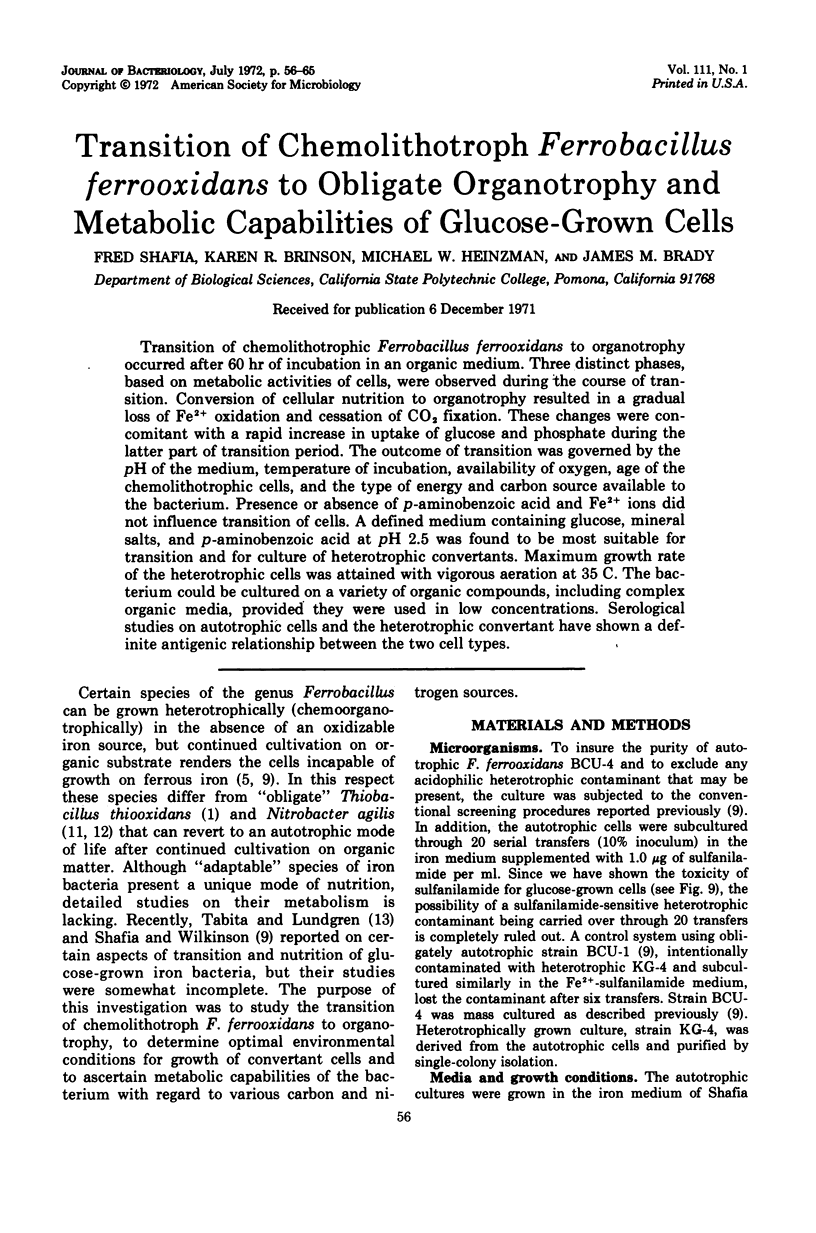
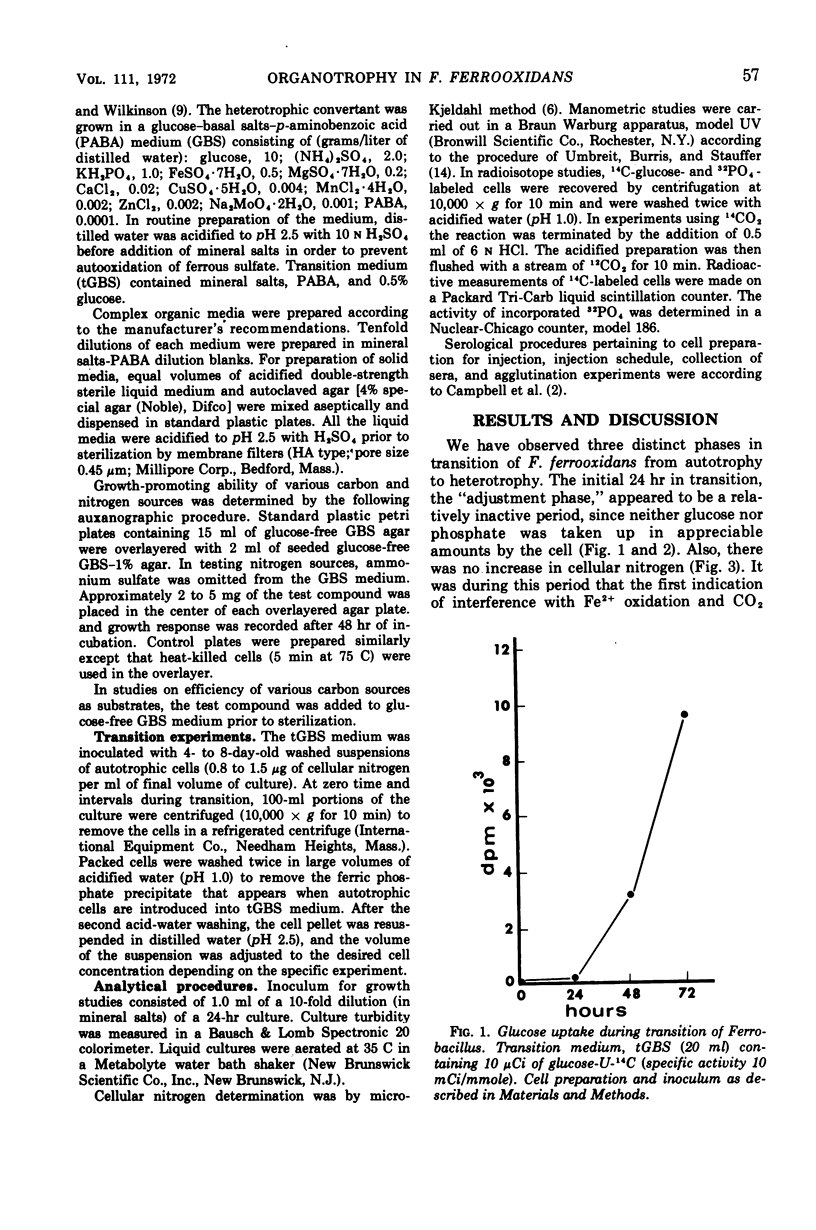
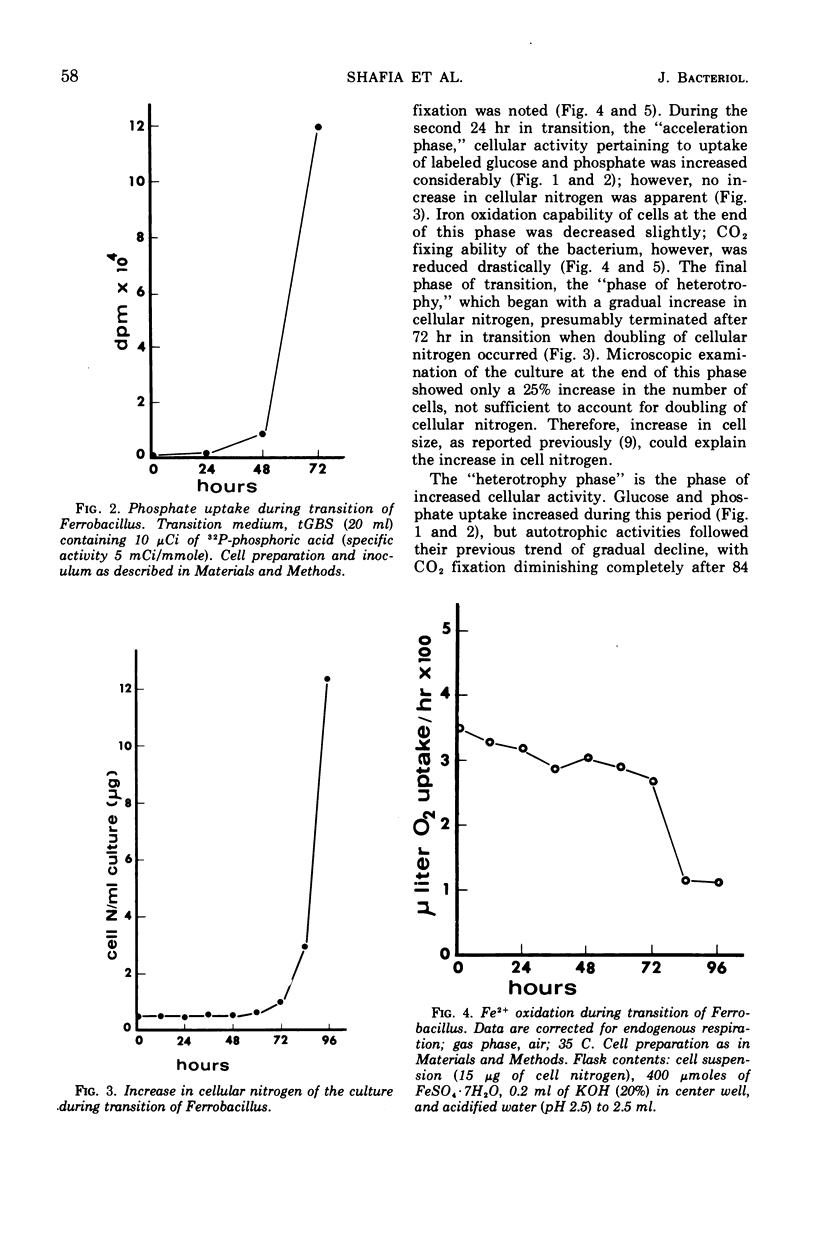
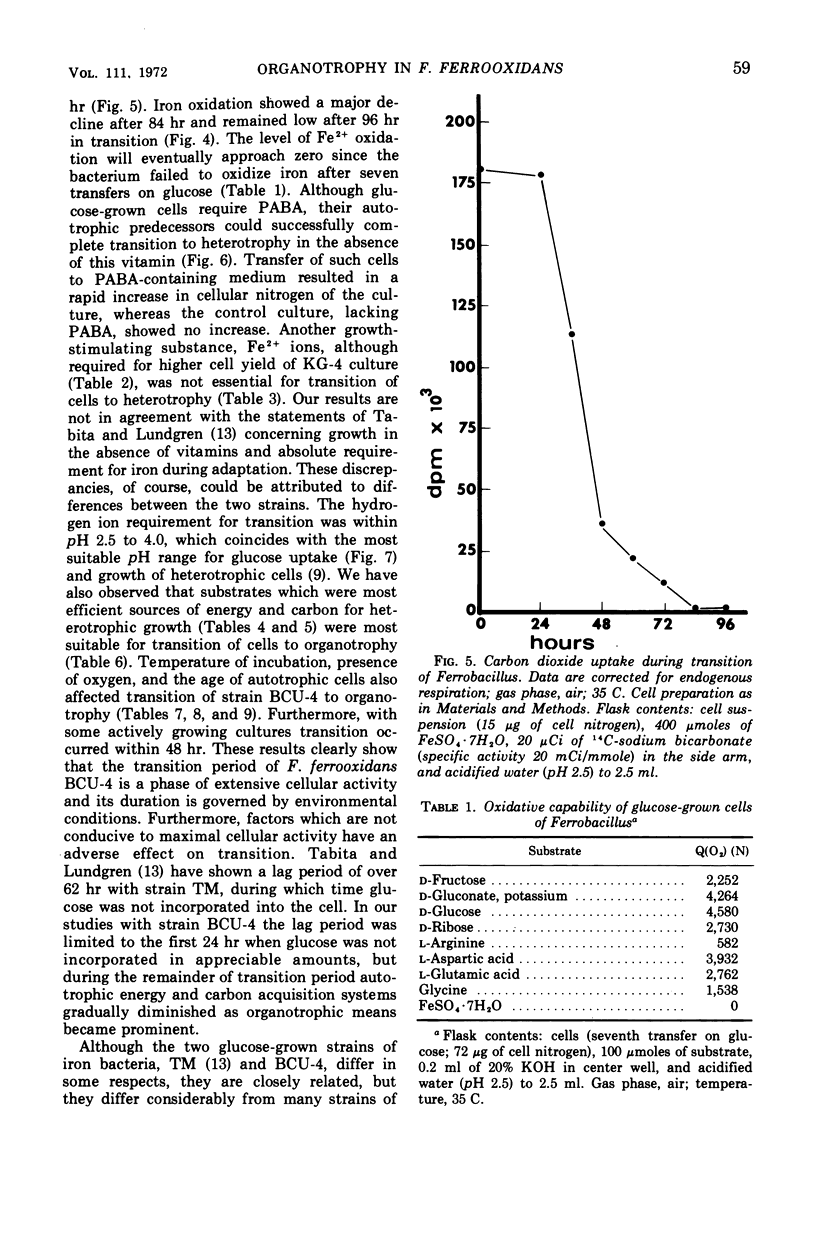
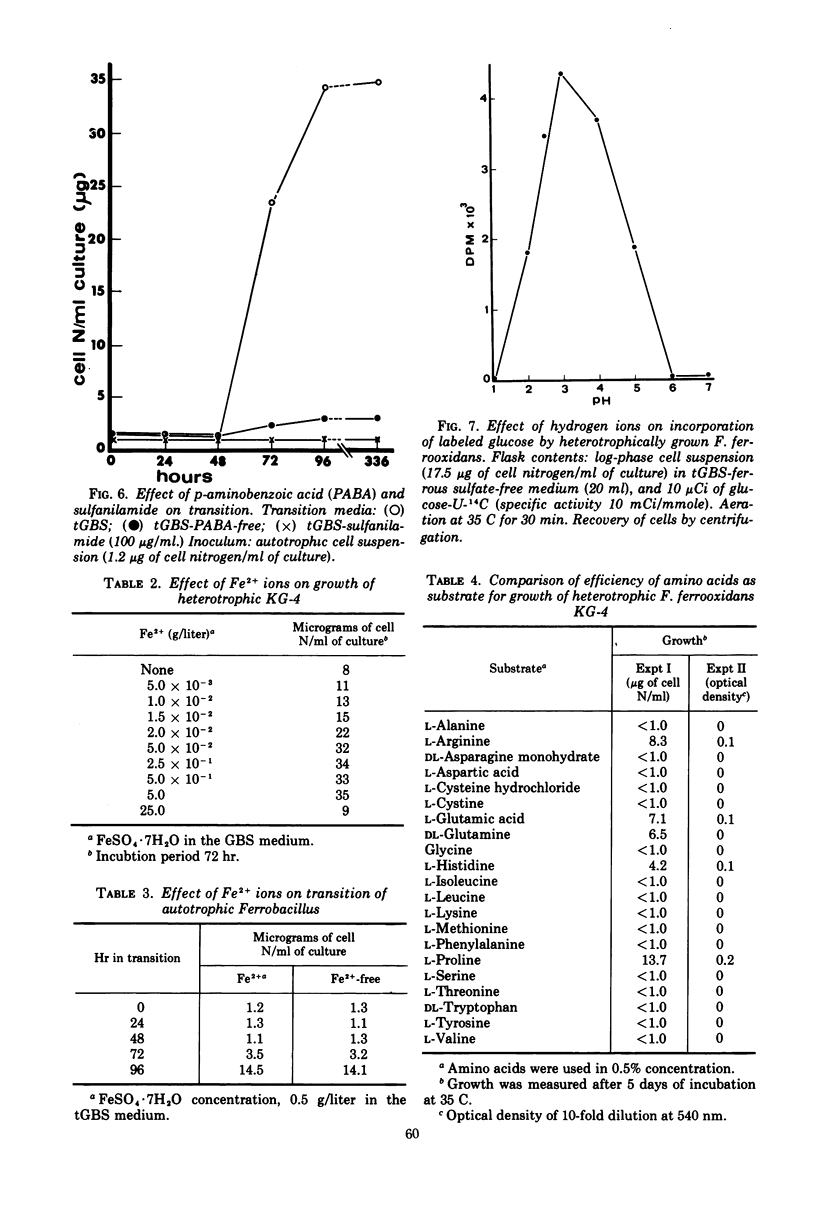
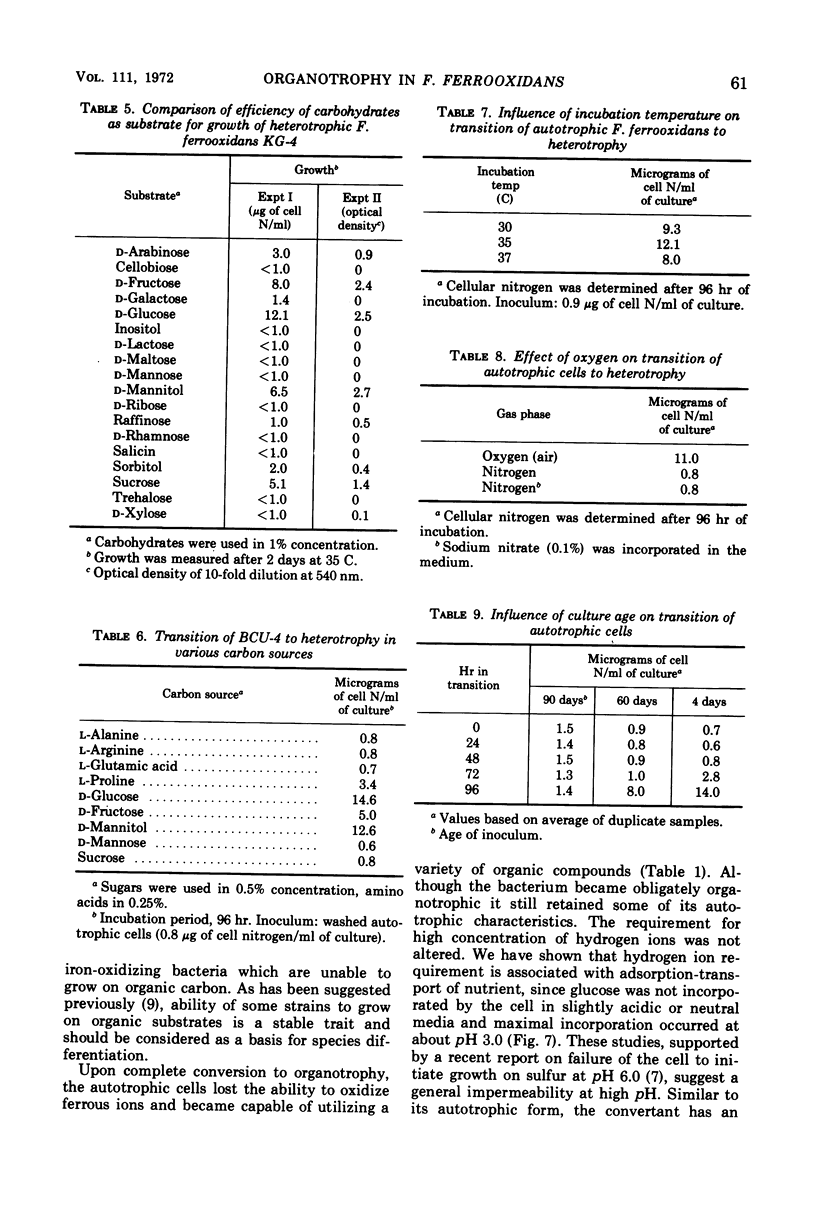
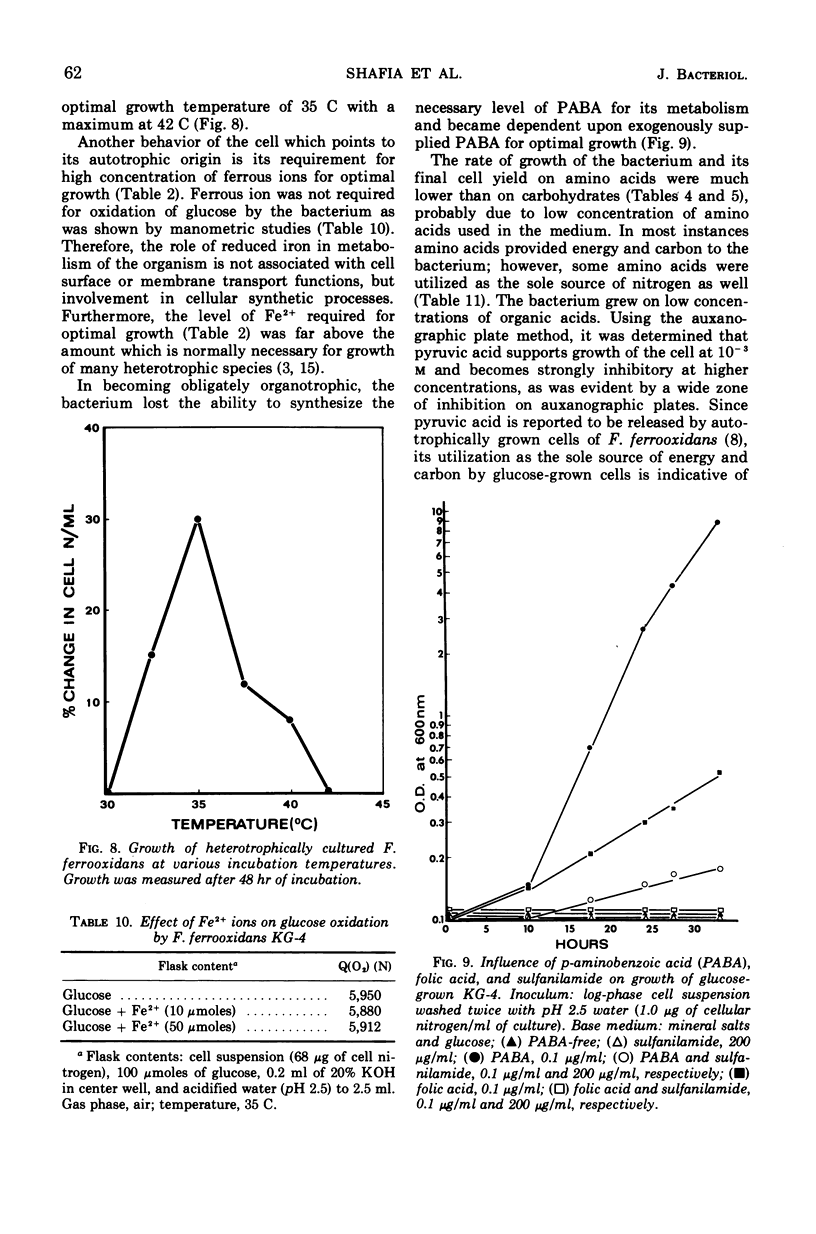
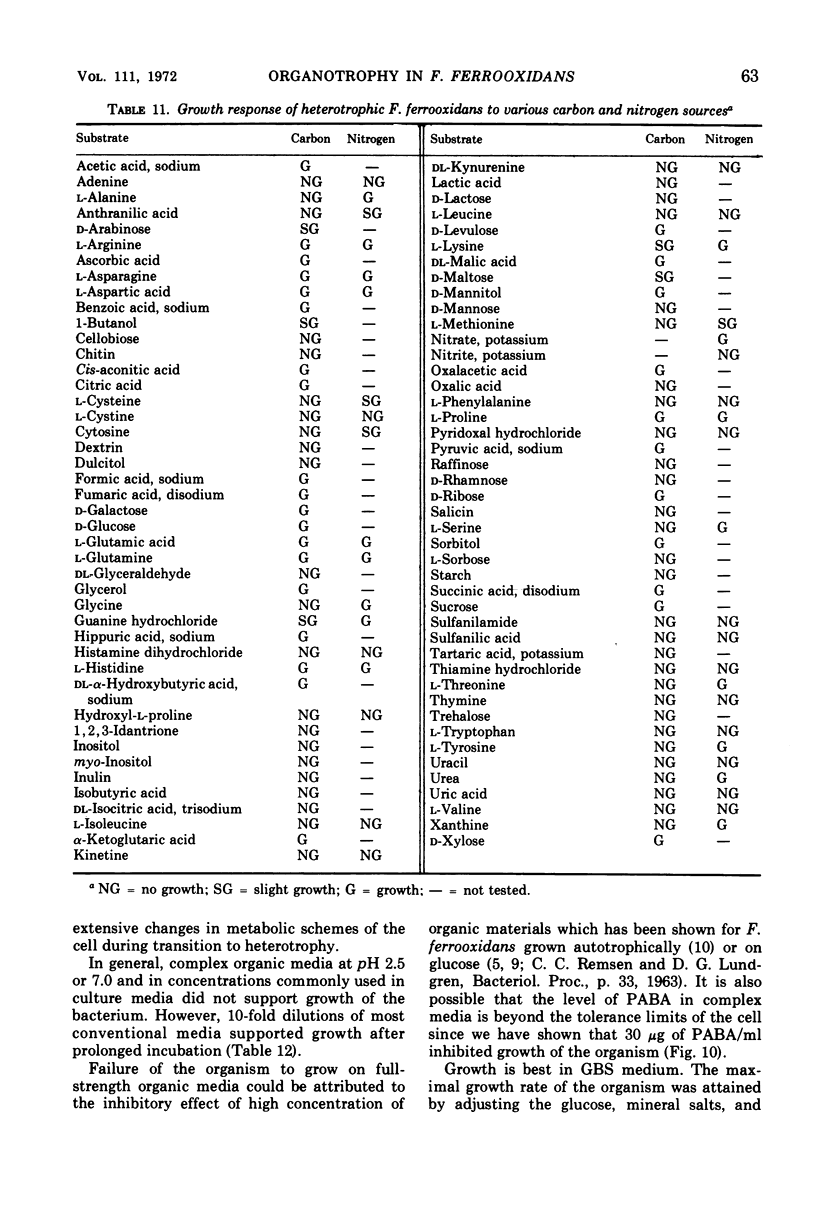
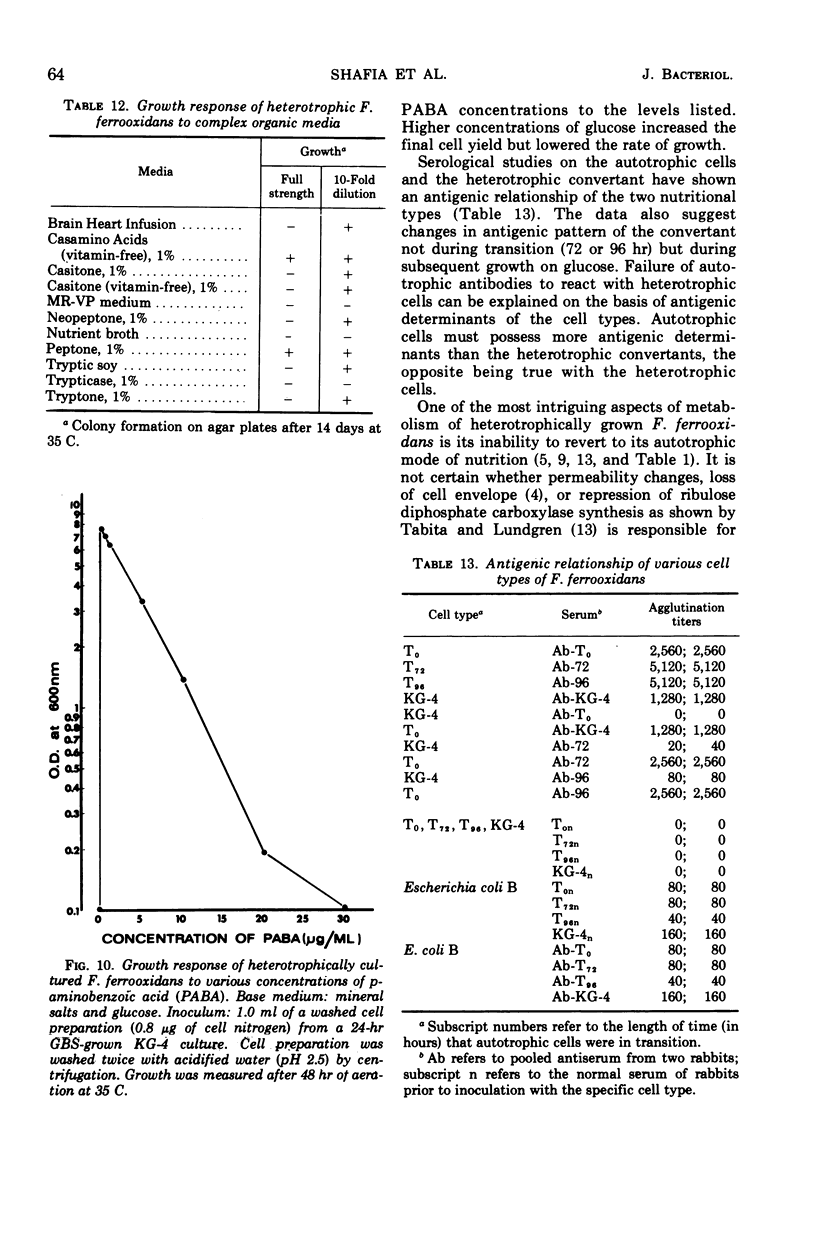
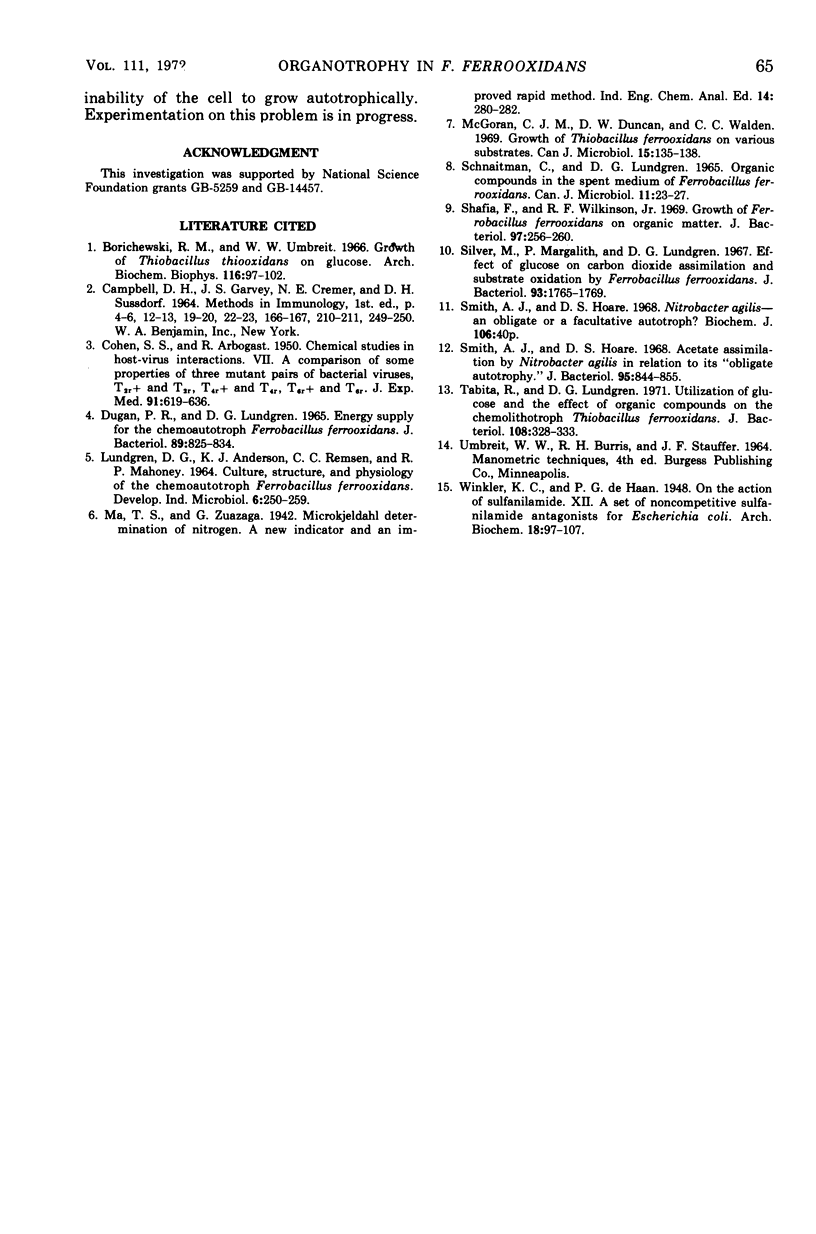
Selected References
These references are in PubMed. This may not be the complete list of references from this article.
- Borichewski R. M., Umbreit W. W. Growth of Thiobacillus thiooxidans on glucose. Arch Biochem Biophys. 1966 Sep 26;116(1):97–102. doi: 10.1016/0003-9861(66)90017-8. [DOI] [PubMed] [Google Scholar]
- COHEN S. S., ARBOGAST R. Chemical studies in host-virus interactions; a comparison of some properties of three mutant pairs of bacterial viruses, T2r and T2r, T4r and T4r, T6r and T6r. J Exp Med. 1950 Jun 1;91(6):619–636. doi: 10.1084/jem.91.6.619. [DOI] [PMC free article] [PubMed] [Google Scholar]
- DUGAN P. R., LUNDGREN D. G. ENERGY SUPPLY FOR THE CHEMOAUTOTROPH FERROBACILLUS FERROOXIDANS. J Bacteriol. 1965 Mar;89:825–834. doi: 10.1128/jb.89.3.825-834.1965. [DOI] [PMC free article] [PubMed] [Google Scholar]
- McGoran C. J., Duncan D. W., Walden C. C. Growth of Thiobacillus ferrooxidans on various substrates. Can J Microbiol. 1969 Jan;15(1):135–138. doi: 10.1139/m69-024. [DOI] [PubMed] [Google Scholar]
- SCHNAITMAN C., LUNDGREN D. G. ORGANIC COMPOUNDS IN THE SPENT MEDIUM OF FERROBACILLUS FERROOXIDANS. Can J Microbiol. 1965 Feb;11:23–27. doi: 10.1139/m65-004. [DOI] [PubMed] [Google Scholar]
- Shafia F., Wilkinson R. F., Jr Growth of Ferrobacillus ferrooxidans on organic matter. J Bacteriol. 1969 Jan;97(1):256–260. doi: 10.1128/jb.97.1.256-260.1969. [DOI] [PMC free article] [PubMed] [Google Scholar]
- Silver M., Margalith P., Lundgren D. G. Effect of glucose on carbon dioxide assimilation and substrate oxidation by Ferrobacillus ferrooxidans. J Bacteriol. 1967 Jun;93(6):1765–1769. doi: 10.1128/jb.93.6.1765-1769.1967. [DOI] [PMC free article] [PubMed] [Google Scholar]
- Smith A. J., Hoare D. S. Acetate assimilation by Nitrobacter agilis in relation to its "obligate autotrophy". J Bacteriol. 1968 Mar;95(3):844–855. doi: 10.1128/jb.95.3.844-855.1968. [DOI] [PMC free article] [PubMed] [Google Scholar]
- Tabita R., Lundgren D. G. Utilization of glucose and the effect of organic compounds on the chemolithotroph Thiobacillus ferrooxidans. J Bacteriol. 1971 Oct;108(1):328–333. doi: 10.1128/jb.108.1.328-333.1971. [DOI] [PMC free article] [PubMed] [Google Scholar]


